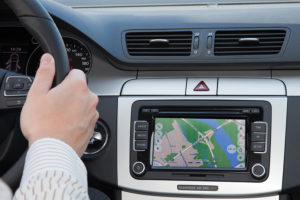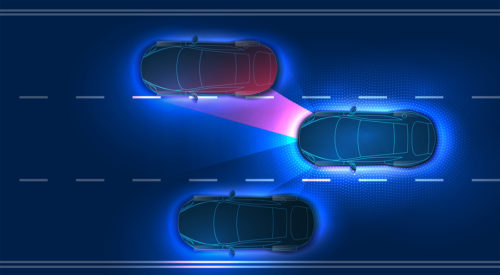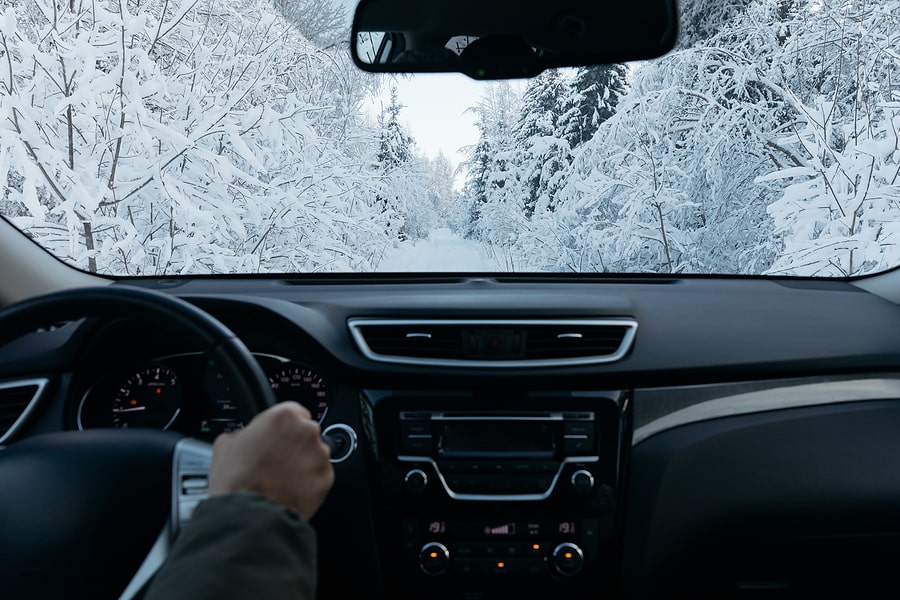Is the bevy of technology found in new cars doing more harm than good? Is it causing distractions that lead to deadly accidents? This issue has caused concern among many drivers, car accident victims, and car accident lawyers alike.
Recently, the National Transportation Safety Board (NTSB) released a report about a fatal accident in which a Tesla SUV steered itself into a concrete highway barrier at 70 miles per hour, killing the driver. The NTSB blamed the shortcomings of Tesla’s Autopilot driver assistance application — and the driver’s own distraction — as factors in the fatal crash.
“It’s time to stop enabling drivers in any partially-automated vehicle to pretend that they have driverless cars, because they don’t,” said NTSB Chairman Robert Sumwalt.
The accident occurred when the driver — an Apple employee — allowed his Tesla SUV to steer itself. The driver assist function veered off course and the vehicle collided with the concrete barrier at high speed. NTSB investigations discovered the Tesla’s driver was playing a video game on his mobile device at the time of the accident. In relaying its findings, the NTSB criticized Apple for not having a company policy in place regarding the use of cellular devices while driving. The agency also encouraged Tesla to continue working on its Autopilot feature, a promising yet flawed technology.
Finally, the NTSB criticized a fellow federal agency, the National Highway Traffic Safety Administration (NHTSA), for being lax in its oversight of new driver-assist technologies.
Safety issues must be proactively addressed now. We cannot wait for more tragedies to occur.
What Is Distracted Driving?

More than 2,500 people die each year because of distracted driving, making it a major concern on roadways across the nation.
Driver distractions have three distinct categories:
- Manual distractions: Manual distractions are distractions that cause a driver to take their hands off the wheel. Examples of manual driving distractions include eating, drinking, applying makeup, adjusting your vehicle controls, stereo, or GPS. Texting is also a manual distraction.
- Visual distractions: Visual distractions cause a drive to take their eyes off the road. Examples of visual distractions include looking for something you dropped on the floor, looking at your children fighting in the back seat, rubber-necking while driving past an accident, or texting.
- Cognitive distractions: Cognitive distractions are those in which your mind is not on the task of driving. Sure, we all “zone out” or daydream, but doing so on the road can be deadly. You can also be cognitively distracted by arguing with someone on the phone or in the car with you, thinking up a witty text reply, or a number of other possibilities.
Clearly, texting is the worst offender here, comprising all three distractions at once. In fact, the NHTSA notes that, in the approximately 5 seconds it takes for you to send or receive a text while driving down a road at 55 miles per hour, you would drive the distance of a football field while not watching the road, not placing your hands properly on the steering wheel, and not paying full attention to the task of driving.
Dangerous Distractions in Newer Cars
Tech companies and automakers are well aware of the distraction that technology poses behind the wheel. In fact, they’ve attempted to eliminate some of these distractions for drivers by offering apps and auto features that operate by voice activation. This means the driver does not need to press buttons on their dash or on their phones while driving.
However, these solutions do not always work as intended, which can just make distractions worse!
Here are some technological advancements that can increase the distractions that drivers have to contend with.
- Autopilot functions, like the one that played a role in the Tesla accident, are designed to assist the driver by steering and stopping in certain situations. However, the autopilot technology has not advanced enough to take over driving entirely. In Tempe, Arizona, a woman was killed by a “self-driving” Uber SUV that failed to detect pedestrians crossing the street outside of a crosswalk. NTSB found partial fault with Uber for not having the proper safety division or management to operate a self-driving car program, but the main fault in the accident was with the software that failed to detect the people in the roadway. The car’s software detected the woman in the road more than 5 seconds before impact but failed to take any avoidant action, striking her at 40 miles per hour.
- Hands-free cell phone use. Speakerphone makes it possible for drivers to keep their hands on the steering wheel while talking on the phone. In fact, many states have passed laws that require drivers to only operate their phones in hands-free mode while driving. In Massachusetts, for example, adult drivers are no longer allowed to have their hand on their phone while driving. They may only use their hands on their phone to do a single swipe or press a single button. Texts and outgoing calls must be performed by voice activation. The problem with this, however, is that even operating a phone in voice mode constitutes a distraction from the task of driving a car. Drivers lose focus on whether the vehicle in front of them is about to turn, or whether a traffic light has changed from green to red. “Hands-free” can still translate to “cognitively-distracted.” In fact, studies indicate that a driver engaged in conversation scans the road differently, and does not look in rear or side view mirrors as often as they normally would when compared to a non-conversing driver.
- Infotainment systems. These are the large screens located in the dash-area of newer cars that provide a whole bundle of technology, including phone call technology, GPS, temperature gauges for your heated seats, music libraries, and even the ability to watch movies while in the car. The problem with these displays, as explained in an op-ed published by Popular Mechanics, is the absence of knobs that one can use to adjust things in the car without looking. Instead, new, screen-based systems require drivers to take their eyes off the road and a hand off the wheel. While many of these systems come with hands-free voice activation, a recent study indicated that, when asked to complete different tasks on infotainment systems with voice activation, participants found the tasks to be moderately- to highly-distracting in a cognitive sense.
Technology to Save Us from Technology!
As Dr. Bryan Reimer from M.I.T. observed in a widely viewed TEDx Talk, “With increased automation comes increased responsibility.”
While many people look forward to the day when autonomous vehicles free up time for us to get work done during a commute in our own cars, we have not YET arrived at that point. With every new technological advancement, we get a little closer. But until we cross the threshold to true automation, drivers still need to stay fully engaged in the manual, visual, and cognitive tasks of driving to keep themselves and others safe.
There’s no way around it: driving is a task that demands your full attention. Distractions come with disastrous consequences.
Additionally, engineers have recently focused efforts on developing technology to save us from distractions caused by technology. It’s enough to make your head spin!
Here are some of the solutions they’ve come up with:
- Cell phone blocking technology. It would be nice if all of us had the discipline to shut off our phones or put them in airplane mode while we drive. However, since that’s just not happening, companies have come up with apps that block drivers from sending or receiving calls and texts while a car is in motion. Most often used by employers or parents of teen drivers, these apps have features that can track speed, detect sudden stops, block use of a car stereo, and even send text or email alerts to let parents and bosses know when something is amiss. For those worried about the inability to use one’s phone in an emergency, fret not: most of these apps come with a 911 override, and some may allow a small list of individuals whose calls will go through while the app is engaged.
- Safety features that allow the vehicle to take over operations briefly if the driver is distracted by something else (such as a touchscreen infotainment system). Some of these features include forward-collision warnings, which provide a visual or audible alert if the vehicle is about to crash into something. This feature has been found to reduce rear-end crashes by about 27%. Automatic emergency braking is another safety feature that engages the brakes if the vehicle senses that a collision is about to occur and the driver has been too slow to respond to a hazard. Lane departure warning emits a visual or audible warning when a car passes over centerlines and the driver has not engaged a turn signal. Finally, lane-keeping assist takes over braking and/or steering if a vehicle begins to drift out of a travel lane.
While we haven’t crossed the finish line in the race to develop a truly self-driving vehicle, many companies—both well-known and obscure—have joined the competition.
Some of those companies include:
- Amazon plans to put 100,000 electric delivery vehicles on the road by 2030, and has developed an autonomous delivery robot as well as patented autonomous lane-switching technology. The company has also invested in an autonomous startup created by Google and Tesla veterans.
- Cisco has been busy developing the data layer needed for self-driving and smart car capabilities.
- Apple currently has 70 self-driving vehicles on the road in California. In 2019, the company cut more than 200 employees from its self-driving car program in what was initially described as a restructuring effort. The company then acquired a self-driving startup and built prototypes for an electric van.
- Ford plans to start rolling out self-driving vehicles soon. These “highly autonomous” vehicles are intended to be rolled out in geo-fenced areas, including Austin, Texas.
- Aptiv has completed 100,000 self-driving taxi rides in Boston, Las Vegas, Pittsburgh, and Singapore.
- Audi unveiled its A8 and became the first company to employ hands-free driving. The company plans to spend $16 billion on self-driving and sustainable technology in the next few years.
- Microsoft is providing Azure cloud services to companies who are working on self-driving cars.
- Toyota is working on “guardian angel” technology in which the self-driving features will only take over for the driver when he or she is about to make a mistake.
New Faces of Old-Fashioned Distractions
Meanwhile, as new technologies are brought online, plenty of decades-old distractions will continue to cause serious injuries. If you sustained injuries in a car accident caused by a distracted driver, you may have the right to receive significant compensation from the parties at fault for the crash. Contact an experienced car accident injury attorney today to learn more.





